Introduction
Setting up a private pension plan is a strategic move for incorporated professionals aiming to secure financial stability post-retirement. Private pension plans, especially Individual Pension Plans (IPPs), offer significant tax advantages and flexibility compared to traditional RRSPs.
Designed for high-income professionals, these plans can help maximize retirement savings while providing immediate tax benefits for employers and employees alike.
What Is a Private Pension Plan?
A private pension plan is a retirement savings vehicle established by a corporate employer for the benefit of its employees. These plans can either be registered or unregistered with the Ministry of Revenue:
- Registered Pension Plans (RPPs): Employer contributions are not considered taxable benefits for employees.
- Unregistered Pension Plans: Contributions are treated as taxable benefits for employees.
An Individual Pension Plan (IPP) is a defined benefit registered pension plan tailored for professionals and small business owners. Its primary purpose is to provide periodic payments to employees after retirement. Contributions to an IPP are tax-deductible for the employer, and additional deductions are available for interest on borrowed funds used to sponsor contributions.
Advantages of Individual Pension Plans (IPPs)
- Higher Contribution Limits
Compared to RRSPs, IPPs allow for larger annual contributions, particularly as the individual approaches retirement age. The allowable contribution is calculated based on:
-
- Age of the plan holder
- Employment income
- CRA-prescribed formulas
- Tax-Deferred Growth
Earnings within the IPP are not taxed while they remain in the plan, allowing for compounded growth over time. - Deductibility for Past Services
Employers can make tax-deductible contributions to account for the employee's past years of service, providing additional financial flexibility. - Catch-Up Contributions for Older Employees
As individuals age, the required contributions increase to meet defined benefit obligations, offering greater savings opportunities in later years.
Contribution Rules and Limitations
- Contributions are capped based on employment income and CRA guidelines.
- Past-service contributions are permitted, allowing employers to "catch up" on missed contributions for previous years.
- Additional contributions may be required if the plan’s returns fall below 7.5% annually.
Lock-In Provisions
Assets in an IPP are locked in until retirement. If an employee leaves the employer or the plan is terminated before retirement or age 71, funds must be transferred into:
- Locked-In Retirement Accounts (LIRAs)
- Locked-In RRSPs
These accounts preserve the tax-deferred status of the funds. Upon reaching retirement, funds must be converted to:
- Life Income Funds (LIFs)
- Locked-In Retirement Income Funds (LRIFs)
- Registered Retirement Income Funds (RRIFs)
- Life Annuities
Employer Responsibilities
Employers sponsoring an IPP must ensure compliance with CRA regulations and actuarial requirements. Contributions to an employee’s IPP are:
- Fully tax-deductible as an employer expense.
- Not treated as taxable benefits for employees.
Additionally, employers may need to consult actuaries or accountants to determine annual contribution requirements and optimize plan benefits.
Considerations for Professional Corporations
Incorporated professionals can greatly benefit from IPPs by securing retirement savings while optimizing their corporate tax positions. However, it is crucial to carefully plan and administer these plans to comply with regulatory requirements and maximize benefits.
Conclusion
Private pension plans, particularly IPPs, are an excellent retirement savings strategy for incorporated professionals. They provide higher contribution limits, tax-deferral benefits, and tailored retirement solutions. To maximize the benefits of an IPP, consult with qualified tax and actuarial professionals to ensure compliance and optimal contributions.
For more details on setting up a private pension plan, seek professional advice to tailor a solution that aligns with your financial and tax planning goals.
This article is written for educational purposes.
Should you have any inquiries, please do not hesitate to contact us at (905) 836-8755, via email at [email protected], or by visiting our website at www.taxpartners.ca.Tax Partners has been operational since 1981 and is recognized as one of the leading tax and accounting firms in North America. Contact us today for a FREE initial consultation appointment.


